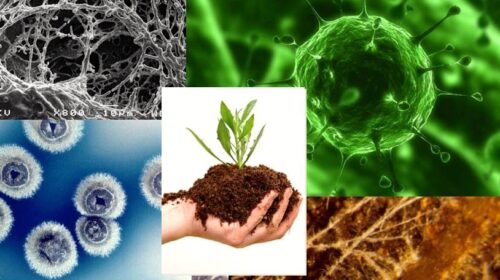Global Agriculture Analytics Market to grow at 13.65% CAGR, which is anticipated to reach USD 1.8 billion by 2030.
CRI Report has released a report titled “Agriculture Analytics Market – Analysis of Market Size, Share & Trends for 2014 – 2020 and Forecasts to 2030” which is anticipated to reach USD 1.8 billion by 2030. According to this Report, the market is anticipated to portray a CAGR of 13.65% between 2020 and 2030. According to the report, The main driving forces behind the growth of Agriculture Analytics include increased agricultural mechanisms in developing countries, rising labour costs as a result of a lack of skilled labour, increased pressure for food supplies in the world as a result of increasing population, significant savings on smart farming techniques and government initiatives to adopt advanced agricultural technology. The increasing need for an optimal crop production with scarce funds gives it tremendous popularity among farmers.
The market report on global Agriculture Analytics market includes in-depth insights as:
- The estimated value of the market was USD 0.89 billion in the year 2020.
- Region-wise, the market in North America, which held the largest market share of XX% in the year 2019, emerged as a key market for Agriculture Analytics Market.
- Based on application, livestock emerged as a key segment in the global Agriculture Analytics Market.
- Based on component, a solution emerged as a key segment in the global Agriculture Analytics Market
- Key players are likely to focus on product innovations and expansion through mergers to retain their positions in developed markets.

“In recent years, urban farming has become a popular trend worldwide, both in favour of population who grow food in community parts or in roof gardens. While the capacity to supply urban populations with locally grown crops is not to be diminished, many advantages go beyond providing local communities with food. The effects of urban precipitation runoff reduction and the improvement of air quality is favourable on the environment. The work to plan and retain these parts also contributes to strengthening the social bonds of the community. Using large-scale data analysis and AI, urban farmers can enhance their efficiency and maximise their limited available space. S some researchers, these efforts could produce up to 180 million metric tonnes of food each year, accounting for approximately one-tenth of the world’s vegetable crop, legumes and tubers..”, according to this report
The compilation of vast and complicated data series that are typically difficult to process using standard database management techniques is known as big data analytics and processing. In almost every region of the world, the agriculture sector is undergoing policy reforms. As a result, new production method projects such as contract farming or corporate farming are being tried. Big data is a term that describes a vast amount of data that is mined for information that can assist an organisation in making informed decisions and strategic business steps. In agricultural applications, big data is becoming increasingly important to help farmers face the challenges of a rising global population, climate change, and urbanisation.
Global Agriculture Analytics market is segmented by application into Farm Analytics, Livestock Analytics, and Aquaculture Analytics. The area of application for livestock analytics includes feed management, heat stress management, race management, monitoring of and management of the behaviour, and other areas. Whereas others include the management of calves, genetics and animals. The farm includes a variety of daily tasks, resulting in large numbers of critical animal data. Farmers could suffer major losses from any mismanagement in the diet or animal tracking. Consequently, farmers invest in the management of their livestock processes to produce quality analytics solutions.
Key Players in the Market
- Some of the key players operating in the global Agriculture Analytics market are Deere & Company (US), Trimble (US), AGCO Corporation (US), AgJunction (US), Raven Industries (US), AG Leader (US), Taranis (Israel), AgEagle (US), Teejet Technologies (US), The Climate Corporation (US), Topcon Positioning Systems (US), Descartes Labs (US), ec2ce (Spain), Prospera Technologies (Israel), Autonomous Tractor Corporation (US), Other Prominent Players
Get Valuable Insights into Global Agriculture Analytics Market
In the new report, CRI Report thrives to present an unbiased analysis of the global Agriculture Analytics market that covers the historical demand data as well as the forecast figures for the period, i.e., 2021-2030. The study includes compelling insights into growth that is witnessed in the market. The market is segmented by application into Farm Analytics, Livestock Analytics, and Aquaculture Analytics, by component into Solution and Services. Geographically, the market is segmented into North America, Latin America, Europe, Asia Pacific and Middle East and Africa.




